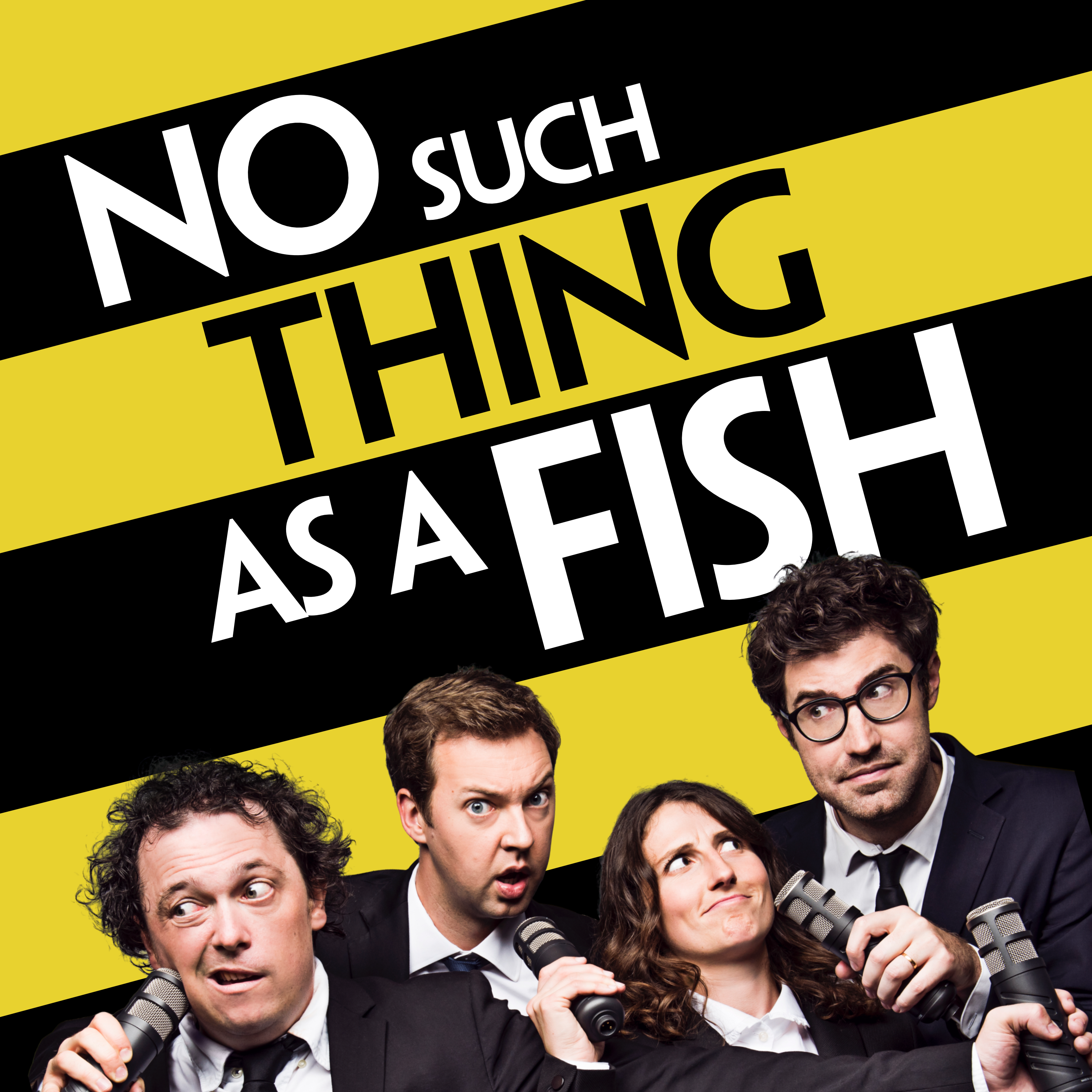
Piano, finally
Piano Finally is a podcast by an old bloke who is learning the piano, finally. I cover the process of learning the piano and music theory as an adult learner. I also review piano books, hardware and other materials from an adult learner's perspective.
Piano, finally
Episode 55 - Play Like No One Is Listening
🎙 Episode 55 – Play Like No One Is Listening
G’day and welcome back to Piano, Finally, where an old bloke keeps learning the piano, one step (and one podcast) at a time.
This week’s script was written in the foyer of Carriageworks ahead of Aphrodite, a world premiere chamber opera by Nico Muhly. The venue, with its industrial charm and bold programming, is perfect for discovering new voices—and maybe a future Taylor Swift. More on the opera at the end of the episode.
🎭 Aphrodite at Carriageworks
🎸 Friday’s school carnival featured the annual Battle of the Bands—loud, fun, and featuring some talented Year 8 students. I only caught one band in between dunk tank duties, but it was great to see so many students skipping the rides and cheering on their friends.
🎧 This episode sounds a little different again—thanks to a second Rode NT1 mic that lets me speak and play at the same time. We’ll see how it goes.
📺 YouTube Spotlight – Zarty – Music
Discovered via algorithm magic, Zarty’s video “STOP PLEASE 21 Classical Accompaniments that are not Alberti Bass” was a revelation. Zarty breaks down alternatives to the classic Alberti pattern, showing each one in isolation and in Mozart context. His clear explanations and clean presentation make it easy to understand how accompaniment shapes the feel of a piece. Highly recommended for anyone struggling with left-hand patterns (like me on a bad day).
📝 Essay – Play Like No One Is Listening
Inspired by that old quote about dancing, I reflect this week on playing the piano as if no one is listening—even when they are. As hobbyist pianists, we’re lucky. No exams, no assessments, just the joy of learning and sharing music. Whether it's sneaking in a few bars during a music class cover or trying out the school grand piano after hours, I’ve learned that playing publicly—even informally—can be liberating and fun when there’s no pressure. Don’t wait for perfection. Share the music.
🎹 Nord Stage 4 Review – The Organs
We continue our Nord Stage 4 deep dive with the organ section. With two independent organs, full drawbar control, and models like the Hammond B3, Vox Continental, Farfisa, and two pipe organs, there’s plenty to explore. You can blend layers, apply vibrato and chorus, and even use pitch bend and sustain creatively. Nord Stage 4 Overview
🎼 Progress & Piano Talk
This week’s practice includes four pieces I’ve been maintaining, now played using a new virtual instrument—Claire by Native Instruments, sampling the legendary Fazioli f308. It’s not the $400k real thing, but it’s close enough through headphones. Claire Bundle
Until next week, play like no one is list
You can contact me:
- via email at david@pianofinally.show; this is probably the best option
- the show website, www.pianofinally.show
- Instagram and Threads @pianofinally
- and on YouTube
- all the podcast directories - list
- here's the RSS feed
Some of the links to books and other items mentioned in the podcast are affiliate links for Amazon or other providers. If you use one of these links, a commission may be paid to me at no additional cost to you. Thank you if you use a link.
All reviews of products, websites and services are unpaid, and no sponsorship has been received for any content on this podcast.
G'day everyone, I'm David Reidy. Welcome to Piano Finally, a podcast by an old bloke who's getting around to learning the piano. Finally. Welcome to Show 55. Thank you very much for listening. If this is the first time you're hearing the podcast, I hope you enjoy what's in the show. If you're back for another episode, then thanks for returning. If you too are learning a musical let me know how you're going with it. You can contact me at david at pianofinally.show. Another week, another foyer. A different one this time. I'm going to see Aphrodite, the world premiere of a new chamber opera by Nico Mulhi. This performance is being put on at Carriageworks, a performance based in Sydney that used to be where, surprisingly, New South Wales Railways built its railway carriages. It's a huge site with movie sound stages in another part of the precinct. I associate the venue with productions and presentations that are outside of the mainstream. The Festival of Dangerous Ideas has been held here and many smaller theatrical performances. I have tickets to a few more events here over the coming months. I think it's always a good idea to look around at some of the smaller venues. You never know where the performers you see may go. After all, Taylor Swift played at a small venue in Marrickville to an audience of around 300 people in 2009. I'll include a quick review of the opera at the end of the episode. My extra music this week came via the school's Battle of the Bands on Friday. Unfortunately, I only got to see one of the rock bands perform, as being dunked in the dunk tank and doing supervision duties clashed with the performance times. The band was good, loud, and made up of some students in my year 8 science class. Although there were free carnival rides on at the same time, it was great to see a large number of other students in the hall for the performances. Parts of this week's show may sound a little different. I have added a second microphone, another Rode NT1 to the setup, so I can sit at the Kawai or Nord keyboards and record my voice. This means I can add some music to the main body of the podcast. Previously, I had to record the instruments and voice separately. This week is a bit of an experiment. We'll see how it goes. Once again, the YouTube suggestion algorithm is responsible for me finding this channel. The latest video from Zarty Music was suggested the other day. It is titled, Please Stop, 21 Classical Accompaniments That Are Not Alberti Bass. Zarty, the person behind the channel, is a bit of an unknown. There's no biography attached to his YouTube account, but it is clear that he is classically trained, and I'm pretty sure he's a composer. judging by the types of videos he has on his channel. His production quality is excellent and his presentation style is clear, straightforward and very understandable. Given how much trouble I had, and still do have on bad days, getting an Alberti bass to play smoothly for more than a couple of bars, I was of course interested. The video starts with a scene from Amadeus where the king is looking bored while some Mozart with an Alberti bass plays. The video then goes on to show 21 different patterns divided into different groups, which are used in a similar way to an Alberti bass. For each example, there is notation showing the concept and a simple musical example. With most of the groups, there are also examples of where Mozart has used the particular pattern in one of his pieces. It is this part of the video that I found the most interesting and enjoyable. I watch a fair number of analysis videos, and I've mentioned Ryan Abshear's channel, where he analyzes a lot of classical pieces. These are easy to follow, but the individual parts of the composition are mixed together to make the whole piece, so it can be hard to separate them musically when they're being played. Maybe others don't have this problem, but I find myself getting lost occasionally. Zarty's way of explaining by showing the pattern in isolation, and then placing it in the context of a short piece of the whole work makes it really clear. I now have a much better understanding of what Mozart was up to in the sonatas that are shown. For example, here are two patterns. numbers 1 and 4, shown in the slow tremolo section of the video. They're followed by four bars from Mozart's Piano Sonata 3, where the two patterns alternate. I played the patterns on the Nord, Zarty played the Mozart. As the first video I've seen on this channel, it was a great introduction, and I think I'm going to be watching a lot more over the coming weeks. Play like no one is listening. The original quote is, dance like nobody's watching, but I changed it because dancing while playing the piano is impractical, although I have seen Peter Allen do it. The idea, of course, is that you should do something that you enjoy without worrying that others might judge you. I think it's a pretty good attitude to have when playing the piano when other people are going to be listening. We can play like no one is listening when we're practicing. If you have an electronic keyboard, just plug the headphones in and all anyone else will hear is a tapping of the key. But eventually we're going to want others to hear our playing and I think we should still pretend that it's just for us. Some context first. This is aimed at pianists like me. Those of us who are learning the piano primarily because we want No one is making us and we have no intention of the playing being anything other than a hobby. It also doesn't apply if you're looking for formal recognition of your progress. If you're going to try a grade exam, you know there'll be someone listening and they'll be taking notes. I'm thinking about when we are practicing on an acoustic instrument and there are others around, or friends and family members want you to play something so they can hear what you've been up to, or perhaps as part of some informal event where different people will all have a go. When I get a chance to use the school's grand piano for practice, I usually wait until after school is finished for the day and most of the students are gone. But there still could be people about, including other teachers. The first time I used the piano, I played very, very quietly so no one else would hear my playing, which meant I spent only a short amount of time and didn't really enjoy it. That has changed. At work, it is fairly common to get an extra lesson to cover for another teacher who is away. I've been given a junior music class a couple of times this term. I'm not expected to teach the students anything. Their regular teacher will have set work for them to do. So my main function is to supervise and lend a hand when needed. But it's in a music room, which means there'll be at least one upright piano along with other instruments. so provided it won't destruct the class I've taken to playing something while I'm supervising. I would expect that especially in the elective music classes most of the students would be better keyboard players than me but that's okay they don't expect me to be excellent or even very good but they've always been nice with their comments and has been quite motivating and led to some interesting discussions. Perform when you can. You don't owe people a performance, they haven't paid for a ticket to see you, and they're not employing you to provide background music for a cocktail party. Then you can just do your best and no one will have the right to criticize. Apparently that concept doesn't apply to social media platforms. On those, everyone is entitled to have an opinion and they have the right to tell it to you. Avoid them and try occasionally playing your music for the people around you. Play like no one is listening to you. It's great fun, you'll be stress-free and have the chance to share something special. The left-hand side of the Nord Stage 4 houses the controls for the keyboard's organs. The Stage 4 has two independent organs, each of which has a full set of options. These have independent volume controls. They can be mixed with each other and with the piano and synthesizer sections of the keyboard. Both organs share the same set of effects, although there is a subset of effects that can be applied to each organ separately. There are six models of organs that can be selected in out-of-the-box mode. They are a Hammond B3 from the 1950s, both the standard and bass versions, a Vox Continental transistor organ from the late 1960s, a Farfisa Combo Compact also from the 1960s, and two pipe organs. The organs have full drawbar control with nine sliders starting at 16 feet, and each organ can have independent settings. Here's an example of how they change the sound on the B3 organ. The B3 model includes six different vibrato and chorus settings. It also includes emulation of the percussion effects that were a feature of the original B3 electronic organ. Two additional controls that can be added to the organs are the pitch stick and the sustain pedal. Although organs don't have sustain pedals, this works in the same way as it does on a piano, while the pitch stick allows you to move the pitch of a note by up to a semitone in either direction. The vox organ and the farfisa have similar features to the B3, with the drawbars remapped to match the characteristics of those instruments. The two pipe organs come into their own when combined with some of the effects from the effects section. As with the piano section, the Nord allows you to combine both organs as layers, either with each other or with the other sections of the keyboard for more complex sounds. I'm still getting to know the organ section, and will be exploring it more as I get more proficient at the keyboard. The production of Aphrodite I attended was performed by a string quartet joined by a saxophonist, a percussionist and a pianist. There were just two singers, soprano Jessica O'Donoghue as Ava, and Alto, Mirchot, Mareo as Aphrodite. The story unfolds over a one-hour period in a small apartment, with Ava and Aphrodite musing about beauty and expectations. The performances were excellent and sung in English, and, unlike other operas I have seen in English, the singer's diction was perfect, rendering the certitles unnecessary. The composer, Nico Mullhi, was in the audience for the performance, and the whole production was well received by all. This was the last Sydney performance, but you might be able to catch it in a different production. If you'd like to contact me, email is the best way. You'll find me at david at pianofinally.show and the website at www.pianofinally.show. In both cases, pianofinally is all one word. The show is also on Spotify and available as audio only on YouTube. You can subscribe via any popular iOS or Android podcast application, or from directories such as Apple Podcasts, Spotify or YouTube. I also post an excerpt and link of each episode as an Instagram reel. If you're learning an instrument, let me know where you are in your journey, what's going well and what are the challenges. How are you managing your time? So, until next week, I hope your piano stays in tune and you enjoy your time at the Keys. I've included the four pieces I have in maintenance mode in this week's progress section. This means that each piece gets one play during each practice session, and sometimes a little more if I think I can improve something. They're not perfect yet, but they're getting to where I'd be happy to show them off to others. The main reason for including them is that I have a new virtual piano that I've added to the computer. It's the Clare Piano bundle from Native Instruments. I'll do a full review in a later episode, but the important thing to note is that the Clare Piano is a sample of the Fazioli F308 Grand Piano. It's the piano I'd buy if I had a spare $400,000 and a much bigger house. The pieces were recorded using the Kawaii NV10 as the keyboard and the Native Instruments Clare on the M4 Pro Mac Mini emulating the Fatsiolic F308 Grand Piano set to classical. 아멘 Thank you.
Podcasts we love
Check out these other fine podcasts recommended by us, not an algorithm.

Connected
Relay
Upgrade
Relay
No Such Thing As A Fish
No Such Thing As A Fish
We Can Be Weirdos
Global
Stuff The British Stole
ABC and CBC
The iDeveloper Podcast
Steve Scott (Scotty) & John FoxRaven On: A Pop Culture Podcast
Natalie Bochenski & Stuart Layt
Smart Enough to Know Better
Dan Beeston & Greg Wah
TopMusic Piano Podcast
Tim Topham
The Chopin Podcast
Garrick Ohlsson and Ben Laude



